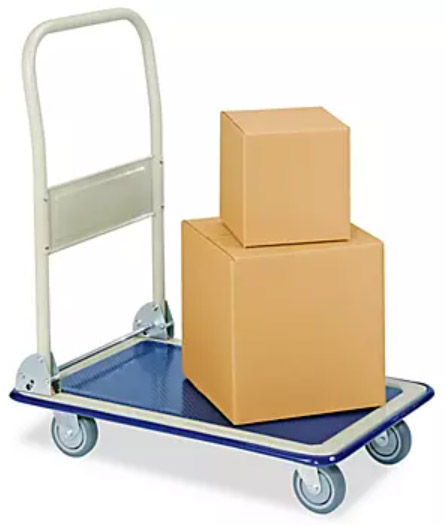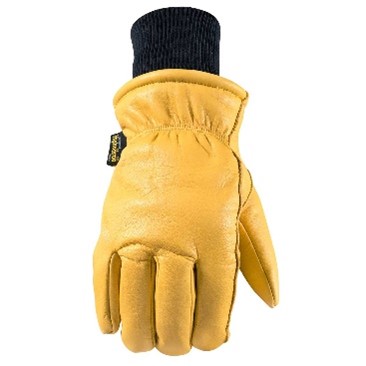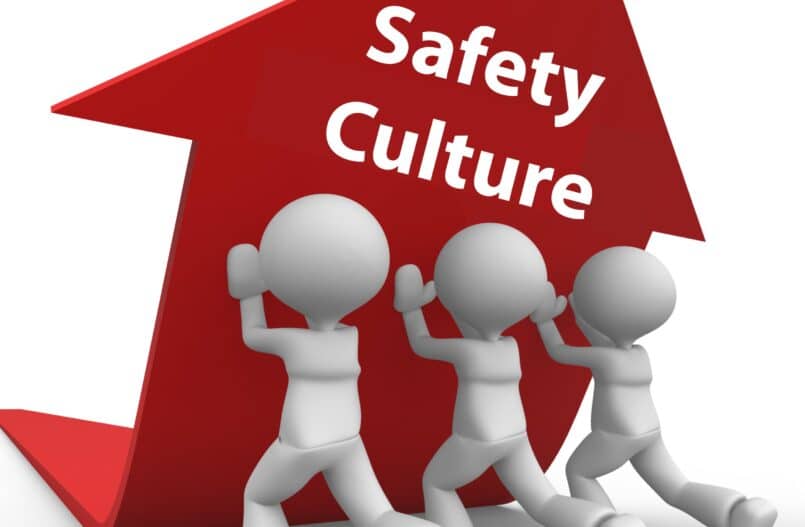Lifting Products for Back Safety
When employees use smart lifting practices, they are less likely to suffer from back sprains, muscle pulls, wrist and elbow injuries, spinal injuries and other problems caused by manual material handling. There are various mechanical devices, engineering controls and personal protective equipment (PPE) you can put in place to reduce or eliminate lifting processes at your school buildings. You must assess and analyze the characteristics of the work environment and the characteristics of the lifting equipment to choose the one that best suits the specific needs of your staff.
injuries and other problems caused by manual material handling. There are various mechanical devices, engineering controls and personal protective equipment (PPE) you can put in place to reduce or eliminate lifting processes at your school buildings. You must assess and analyze the characteristics of the work environment and the characteristics of the lifting equipment to choose the one that best suits the specific needs of your staff.
First and foremost, practice and teach proper lifting techniques for all school staff.
- keeping your feet shoulder distance apart,
- bending from your hips and knees,
- holding the load close to your body,
- controlling your procedure,
- lift and move with your legs and not your back (avoid twisting when carrying).
Many manufacturers produce great lifting products to assist workers when lifting to avoid injuries. Some products that are common in the workplace are moving straps or harnesses. Manual moving harnesses and straps slide underneath heavy or large objects to provide leverage and encourage proper lifting technique when two people are moving these objects by hand. The harnesses and straps distribute the weight of the objects and help keep them stable as they're being moved.
Hand trucks, carts and pallet trucks are another good way to move objects as they decrease the risk of overexertion and back strains but pose their own hazards. When maneuvering this equipment, always maintain a safe speed and keep them under control. Be careful manipulating stairs with a hand truck, moving one tread at a time. Hand trucks and carts can cause lower body injuries when feet and legs get caught under them, so be sure to move slowly and keep good distance from the wheels and underside.
Furniture sliders are an effective way to move objects such as desks, large appliances, or other pieces of furniture in the workplace. Furniture sliders can be used to move an appliance away from the wall to unplug it and ready it for the move or to maneuver it onto a dolly. Additionally, you can use sliders to move furniture a short distance, such as across the room.
A popular way to prevent back pain and improving posture is by wearing a back brace. Back braces hold your back in the best position, preventing strain while you're sitting and standing. Back braces are designed to take support away from the vital areas of your back, such as the spine, intervertebral discs, and vertebrae. This alleviates the stress these areas endure to support your back, resulting in pain reduction.
Maintenance staff should also look to wear basic steel toe or hard toe work boots when performing common construction activities such as lifting heavy objects, as they protect the toes should the heavy item fall onto the foot. Steel or hard toe shoes must meet specific standards for impact and compression protection (OSHA 29 FR 1910.136).

Comp Alliance members with renewal dates in January should keep an eye out for their 2023 Loyalty Awards, as they continue to reap the benefits of intermunicipal cooperation on a grand scale. The Comp Alliance will be distributing more than $466,000 in member loyalty awards to 176 members in early February as it concludes its Loyalty Award disbursements for FY2023.
The Comp Alliance will distribute the initial checks to attendees of the upcoming NYCOM Winter Legislative Conference and the Association of Towns Annual Meeting and Training School. Municipal officials in attendance at either of those events should stop by the Comp Alliance booth for an early distribution of their award. Following those events, all other recipients will be contacted to arrange the delivery of their award.
The Loyalty Award Program symbolizes the tangible benefits and savings that result from municipal cooperation. These savings are generated by the hard work, dedication, and commitment to long-term safety by each of our members. In turn, through the leadership and oversight of its Board of Trustees, the Comp Alliance is financially positioned to keep rates stable and return these savings directly to its members.
For all our loyal June and July members, fret not. The Board of Trustees has authorized the continuation of the Loyalty Award Program through FY2024!
Individual award amounts are based on length of membership with the Comp Alliance and annual funding contributions. The Loyalty Award Program has generated more than $916,000 in awards this year, and nearly $3.5 million total has been returned to Comp Alliance members since the program began in 2019.
The mission of the Comp Alliance has always been to ensure our members are able to meet their long-term workers’ compensation liabilities while maintaining stable funding contributions, which has been made possible through the dedication of our trustees, and partnership with the Association of Towns of the State of New York and the New York State Conference of Mayors.
For more information on the Member Loyalty Award Program, please contact a Comp Alliance Marketing Manager or your insurance broker.
Now that winter weather is upon us and temperatures routinely dip below freezing, it’s a good time to review the best practices for winter Personal Protective Equipment (PPE). PPE is often viewed as a last resort when it comes to employee safety, but it is perhaps the most essential.
Personal Protective Equipment (PPE). PPE is often viewed as a last resort when it comes to employee safety, but it is perhaps the most essential.
During cold weather, PPE should be designed to be warm and protective without compromising flexibility and comfort. PPE for the winter months should include:
- Insulated gloves – protects against frostbite which can affect areas with limited blood circulation, such as the fingers, toes, nose and ears. Insulated gloves are a critical part of winter PPE, balancing protection, flexibility and dexterity even at very low temperatures. Gloves should be soft and layered on the inside with a sturdy, weather-proof exterior to prevent injury against moisture, cold and impact. Gloves also need to provide a firm, safe grip on equipment which is likely to be cold, frozen, icy and slick.
- Outerwear – The best option here is for layered clothing, with the inner-most layer providing insulation and moisture-wicking properties to move sweat away from the skin. Additional layers add to the insulation factor, and an outer shell that is wind and moisture resistant is important. Outer layers that do not absorb moisture work best to keep the weight of the garment down. Inner layers also add comfort and flexibility as they can be removed should the weather or work conditions permit.
- UV eye protection – Do not get fooled by the lack of sun in the winter months. It can be just as strong and damaging as during the summertime and can even reflect off the snow to cause eye damage and discomfort. Wearing properly fitting safety glasses or goggles with UV protection should be required. Working outside on sunny, cold days can still damage the eyes through UV exposure.
- Anti-Slip and Insulated footwear – Safety boots are a commonly worn PPE around the garage area. In the winter, make sure these boots have insulation to keep the feet warm, a sturdy exterior which is water-resistant to keep the feet dry, and a solid sole construction to add grip and stability when negotiating slick walking surfaces. Wearing lined socks made of synthetic material that moves moisture away from the feet, but also provides good insulation can also help if the boot insulation is not adequate on its own. You may want to consider insulated sole inserts that can be removed to reduce moisture contact.
It is important to maintain properly protecting and fitting PPE throughout the year, especially during the winter months when our bodies are not equipped to handle the ice, snow and cold conditions. Remember to wear layers, cover exposed skin, keep hydrated, keep active, and avoid prolonged exposure to severe cold weather.
For additional tips on winter safety, please contact the Director of Loss Control, Robert Blaisdell at This email address is being protected from spambots. You need JavaScript enabled to view it.. Also, check out some PPE safety training videos from Safety Source On-line – ask Robert to provide you with a User ID and Password for access.
The start of the new year is a perfect time to review your department safety progress from the previous year and look ahead at how your safety culture can contribute in a positive way to minimize injuries and control hazards in your workplace.
safety culture can contribute in a positive way to minimize injuries and control hazards in your workplace.
- Look at your workplace injuries last year and ask the following questions:
- Did they increase from the previous year?
- Are your injuries trending in a positive or negative direction?
- Did you have injuries that were caused by a preventable source?
The Comp Alliance Risk Management team is available to address these questions and others related to your workplace injuries. The first steps in correcting and improving workplace injuries is to acknowledge that risks exist in job functions, and as much as possible removing the hazards associated with those risks. Look into removing the hazard altogether. You may be able to implement PPE to protect employees or replace hazardous elements with those likely to be less hazardous.
- Host an active Safety Committee meeting. These meetings address safety issues and concerns among staff, including safety compliance, injury causes, and training needs. Attendance from your Comp Alliance Loss Control Representative will help to facilitate the meetings and improve discussion content. Not all municipalities need to establish a formal safety committee, but all members should have a portion of department head meetings reserved for a discussion on safety items, including any workplace injuries.
- What training did you complete in 2022 and what needs to be added this year? Every year, all staff are required to attend PESH-specific topics of Workplace Violence, Right-to-Know and Bloodborne Pathogens, which have a workplace injury potential. This training can make employees safer and smarter in the workplace, contributing to a positive safety culture. Enact comprehensive training that addresses other areas of potential injury, and not just a program which “checks the box” on required topics. All training programs should be helpful for staff to improve their knowledge of each exposure and implement measures to prevent or minimize injury from the exposure.
- Participate in our loss control inspections. Every year our loss control representatives contact members to gather information on operations and inspect for hazards which could lead to workplace injuries. Department heads or a designee are usually responsible for assisting during the inspection process and it’s a great opportunity to work with our reps to review safety policies and procedures, inquire about the inspection process and correct any safety issues which are raised, many of which can be corrected immediately following the inspection. Our loss control reps are experts in the identification and mitigation of workplace hazards, so ask about our process, classification of hazards and corrective remedies.
- Consider your operational safety culture. A good supervisor will always have their hands on the pulse of their department, understand employee attitudes and values and maintain their focus on completing work safely. A positive safety culture contributes to improved worker morale, work productivity and reduced injuries. Reinforce this safety culture with all staff, encourage them to report workplace safety concerns and recommend improvements, all the while encouraging a safe work environment from the top down and bottom up.
With the arrival of autumn, the highway department faces several hazards this time of year.
Driving changes: With days being shorter, night driving increases. Morning driving will be done in complete darkness, creating limited sight distances and impairing vision. Due to daylight saving time, early evening driving will be riskier as the sun sets earlier. Make your drivers aware of these changes and prepare for them.
Roads filled with leaves: Even in dry conditions, leaves accumulating on the roadways create slick surfaces as vehicle tires cannot directly touch the pavement. During these times, it’s important to stress to your drivers to slow down.
Drivers should maneuver around corners cautiously, expect a decrease in traction and avoid short stops, as a vehicle is likely to skid and lose control. Skilled drivers who are adept at driving in these conditions still need to drive defensively.
Indoor work increases: When the warm weather turns to cooler days, many work crews head indoors to the garage. This is a perfect time to assess the condition of the garage and improve housekeeping to accommodate more bodies. It is a good idea to:
- clean up the break room where the workers are likely to spend more time,
- improve lighting as more mechanical work is expected to be performed to prepare the plow trucks for the snow,
- clear out floor drains to better handle the melting ice off the trucks after plow routes,
- remove any floor obstructions which may cause trip and fall injuries,
- remove any accumulation of junk and debris to improve housekeeping, providing a safer, more enjoyable workplace,
- ensure your garage doors close tightly to prevent cold air entering work bays.
Heating unit maintenance: It is likely that your furnace or heating unit has not been utilized all summer and will need to operate full tilt in the coming weeks. Inspect the unit for proper operation. Ensure filters are cleaned or replaced for adequate ventilation around the intake vents. Confirm heating fuel is topped off and lines are intact with no leaks. Confirm exhaust fumes are vented to the outside and away from any workspaces. Boilers need to be inspected by a qualified boiler inspector every two years. A certificate of inspection needs to be located on or near the boilers.
Readying for winter operations: Fall season is usually a time when roadwork maintenance draws to a close and trucks are equipped with snowplows. You should review your procedures for mounting plows onto trucks and safely installing cutting edges on the plows is essential. Please review these policies with all applicable highway staff, as plows and cutting edges are heavy, cumbersome items that can cause serious injuries if they fell onto an employee. Severe leg and foot injuries have been reported during plow and edge mounting.
Upcoming Events
| No events |

